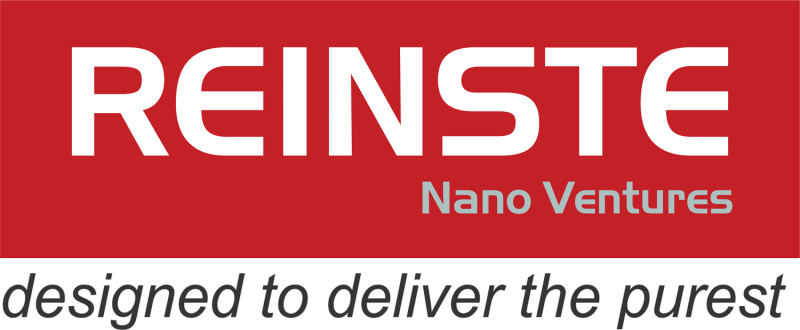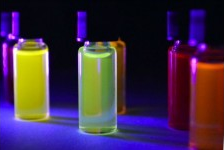Illuminating the Path Forward: Non-Toxic Quantum Dots in Indian R&D
The field of nanotechnology is witnessing a paradigm shift, moving from materials of immense potential but questionable safety to a new generation of smart, safe, and sustainable solutions. At the forefront of this evolution are non-toxic quantum dots (QDs). For decades, the dazzling optical properties of QDs were overshadowed by the toxicity of their core components, primarily heavy metals like cadmium. This limitation severely hampered their translation from the lab to clinical applications. Today, the narrative has changed. The development of biocompatible nanoparticles, particularly cadmium-free quantum dots, has opened up unprecedented opportunities in medicine, diagnostics, and beyond.
For the vibrant research and development landscape in India, this is a pivotal moment. As our nation strives to become a global hub for pharmaceutical and biotechnological innovation, the adoption of safer advanced materials is not just an option but a necessity. These next-generation fluorescent probes offer the promise of highly sensitive and specific diagnostic tools, advanced medical imaging agents, and targeted drug delivery systems without the associated health risks. This guide delves into the world of non-toxic QDs, exploring the science behind their synthesis, their vast applications, and the unique opportunities they present for Indian researchers and industries.
Why Should Indian Researchers Embrace Biocompatible Nanoparticles?
Switching to non-toxic quantum dots isn't just about safety; it's about unlocking new frontiers in research. Here are the tangible benefits for researchers and institutions across India:
- Enhanced Clinical Translation: The primary barrier to using QDs in humans is toxicity. By working with biocompatible materials like zinc sulfide or indium phosphide-based QDs, researchers can significantly accelerate the journey from preclinical studies to clinical trials, aligning with India's "Make in India" initiative for medical devices.
- Superior Imaging Clarity: Non-toxic QDs retain the exceptional photostability and brightness of their predecessors. This allows for longer-term, real-time imaging of cellular processes without photobleaching, providing clearer and more reliable data in fields like oncology, neurology, and immunology.
- Regulatory Approval Advantage: As global and Indian regulatory bodies (like the CDSCO) tighten norms around material safety, research based on non-toxic components has a clearer and faster path to approval. This de-risks long-term projects and attracts more funding.
- Expanded Research Applications: The safety of biocompatible QDs allows their use in sensitive applications previously considered too risky. This includes in-vivo diagnostics, long-term cell tracking, and even therapeutic applications where the QD acts as a drug carrier.
- Fostering a Safer Research Environment: Eliminating heavy metals from the lab reduces occupational hazards for researchers and students, simplifying waste disposal protocols and promoting a culture of green chemistry and sustainable science.
From Lab to Life: Real-World Applications
The versatility of non-toxic QDs translates into a wide array of applications that are particularly relevant to India's healthcare and industrial challenges. The quantum dot synthesis process can be tailored to create probes for specific targets, making them a powerful platform technology.
Advanced Medical Imaging
As superior medical imaging agents, cadmium-free QDs can be conjugated with antibodies to target specific cancer cells. When injected, they accumulate at the tumor site and fluoresce brightly under excitation, allowing surgeons to see the precise margins of a tumor in real-time. This can drastically improve surgical outcomes and reduce recurrence rates.
Point-of-Care Diagnostics
Imagine a low-cost, rapid diagnostic test for infectious diseases like dengue or malaria. Non-toxic QDs can be used in lateral flow assays (similar to pregnancy tests) as highly sensitive fluorescent probes. Their brightness allows for the detection of very low concentrations of disease biomarkers, enabling earlier diagnosis and treatment, a critical need in rural India.
Targeted Drug Delivery
The surface of a biocompatible nanoparticle can be engineered to carry a payload of chemotherapy drugs. These "smart bombs" can be designed to seek out and bind only to cancer cells, releasing the drug directly where it's needed. This minimizes side effects and increases the efficacy of the treatment, a key focus of modern oncology research.
Anti-Counterfeiting & Security
Beyond medicine, the unique optical signatures of QDs make them perfect for anti-counterfeiting. They can be incorporated into inks, polymers, or labels for high-value goods, including pharmaceuticals. This provides an invisible, unclonable security feature that can be verified with a simple UV light, helping combat the pervasive issue of counterfeit drugs in the Indian market.
The Indian Context: Trends and Opportunities
The push for cadmium-free quantum dots for biomedical imaging aligns perfectly with national missions like the National Health Mission and Atal Innovation Mission. There's a growing demand within the Indian scientific community for reliable, high-quality, and non-toxic nanomaterials. Researchers at premier institutes like the IITs, IISc, and NIPER are actively engaged in projects that require advanced fluorescent probes. The key opportunity lies in bridging the gap between lab-scale synthesis and industrial-scale production of these materials within India.
Furthermore, the focus on quantum dot synthesis techniques that are both green and cost-effective is a major trend. Aqueous synthesis methods that avoid toxic organic solvents are gaining traction. For Indian startups and established chemical companies, this represents a significant business opportunity: to become the go-to suppliers of certified, high-performance, biocompatible nanoparticles for the domestic and global R&D market. As the applications expand from research to diagnostics and even consumer electronics (in displays), the demand for these safe and efficient materials will only grow.
Featured Non-Toxic & Low-Cadmium Quantum Dots
Frequently Asked Questions
The primary cause of toxicity in traditional quantum dots is the presence of heavy metals like cadmium (Cd), lead (Pb), and mercury (Hg) in their core. These elements can leach out, especially in biological environments, leading to cellular damage and cytotoxicity.
While often used interchangeably, there are nuances. 'Cadmium-free' specifically refers to the absence of cadmium. 'Non-toxic' or 'biocompatible' is a broader term indicating that the nanoparticle is safe for biological applications. Most non-toxic QDs are cadmium-free, but their overall biocompatibility also depends on their coating, size, and stability. Materials like Zinc Sulfide (ZnS), Indium Phosphide (InP), and carbon are used to create non-toxic alternatives.
Biocompatibility is enhanced through several methods. The most common is surface modification or functionalization. A core quantum dot is often encapsulated within a protective shell (e.g., ZnS) to prevent leaching. Further coating with biocompatible polymers like PEG (polyethylene glycol) or silica makes them water-soluble and helps them evade the body's immune system, increasing their circulation time and effectiveness.
The main challenges include achieving high quantum yield (brightness) in non-toxic materials, ensuring long-term stability in physiological conditions (preventing aggregation and degradation), scaling up production while maintaining uniform size and properties (monodispersity), and developing reliable, cost-effective synthesis methods that are environmentally friendly.


